20 ways to stimulate your pet (without food)
Make your pet’s day with these creative, treat-free ways to stimulate your pet

Did you know there are was to stimulate your pet without food? We all know that pets need both mental and physical stimulation to thrive, but treats aren't the only way to ensure their overall well-being. While food-based rewards can be effective, but over-reliance on them can lead to boredom, hassling you for food, and unhealthy weight gain.
True enrichment comes from tapping into your pet’s instincts, curiosity, and playfulness. Whether you live with a high-energy dog, curious cat, or another clever companion, there are numerous ways you can enrich their day and strengthen your bond.
With the help of vet Dr Hannah Godfrey, we've come up with 20 ideas for stimulating your pet without using a single treat. From brain games and sensory experiences to physical challenges and social interactions, these activities should keep your pet engaged, happy, and thriving.
Best of all, they rely on your time, attention, and imagination – things your pet values far more than a snack (though, we’re sure he won’t say no to one of them either!).
How to stimulate your pet (without food)
1. Try puzzles and games
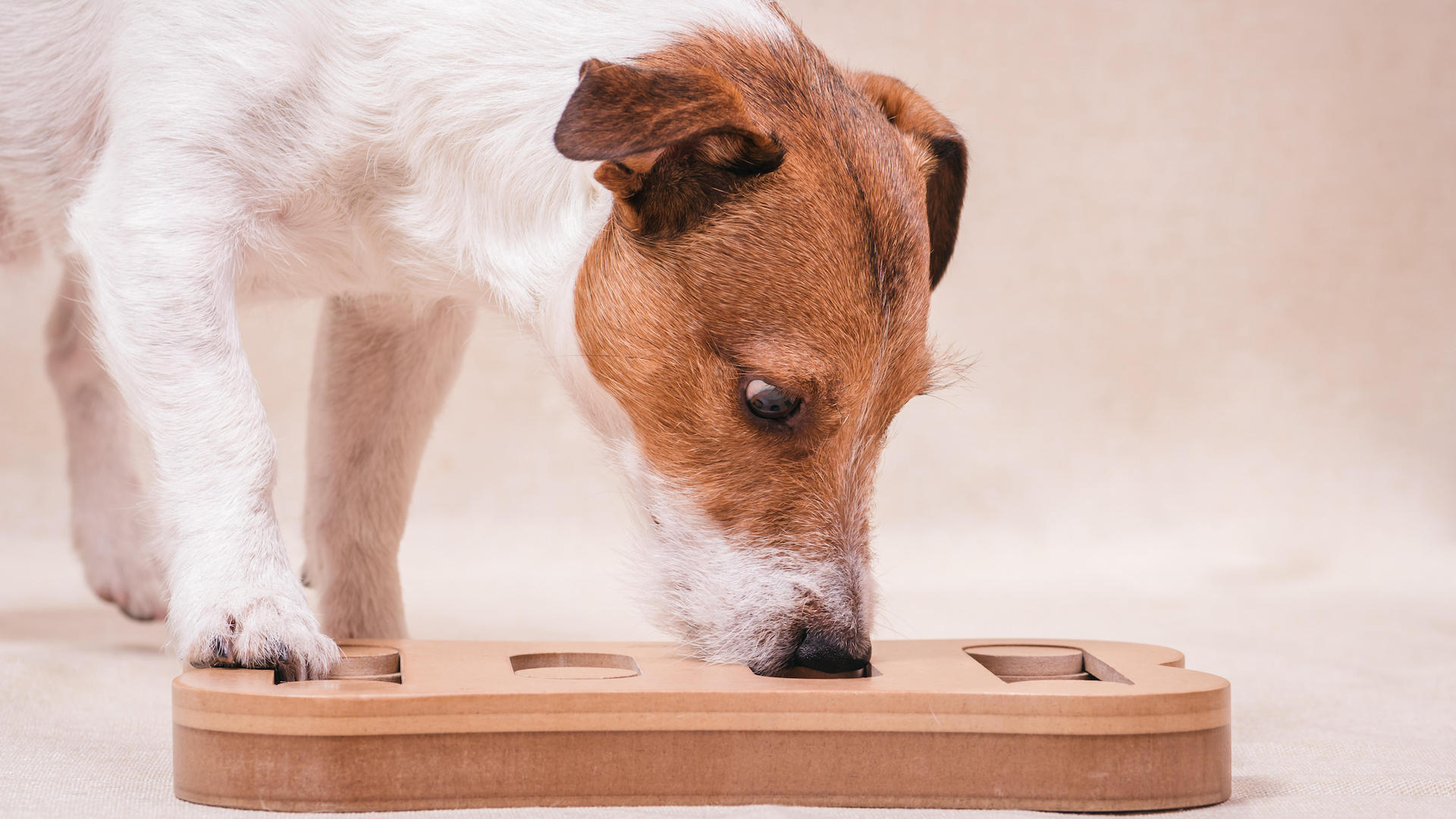
Dr Hannah Godfrey expresses how important we, the humans, are to our animals’ love of life. It’s not as simple as buying them a toy and leaving them to it, we should engage in their curiosity and sense of fun. You’ll likely have to teach them how the puzzle works and guide them towards how to solve it themselves.
“Many pets love to play with their owners, and the reward doesn’t have to be treats, it can just be having your full attention and praise,” she says. “Look for dog or cat toys and activities that will get them thinking.”
2. Hide their favorite toy

If your pet has a favourite toy, Dr Godfrey suggests a game that will make the most of this.
Get the best advice, tips and top tech for your beloved Pets
“Hide their favorite toy, and reward them by playing with them when they find it,” she says.
Remember that animals’ sense of smell is vastly superior to ours, so you can be quite inventive with your hiding place once they understand the goal of the game.
3. Set up different smells for them

It’s estimated that a large proportion (75–90%) of our enjoyment of food is due to its smell rather than taste. Given that animals’ olfactory senses tend to be far superior to ours, make the most of this!
Dr Godfrey advises: “It’s not just food that stimulates your pet; why not try to stimulate other senses by finding some pet-friendly scents and creating a smelling station?
“You could even have them try to find the source of the smell, which could be anything, from a small amount of meat or fish stock, to catnip or pet-safe herbs.”
4. Set up an obstacle course
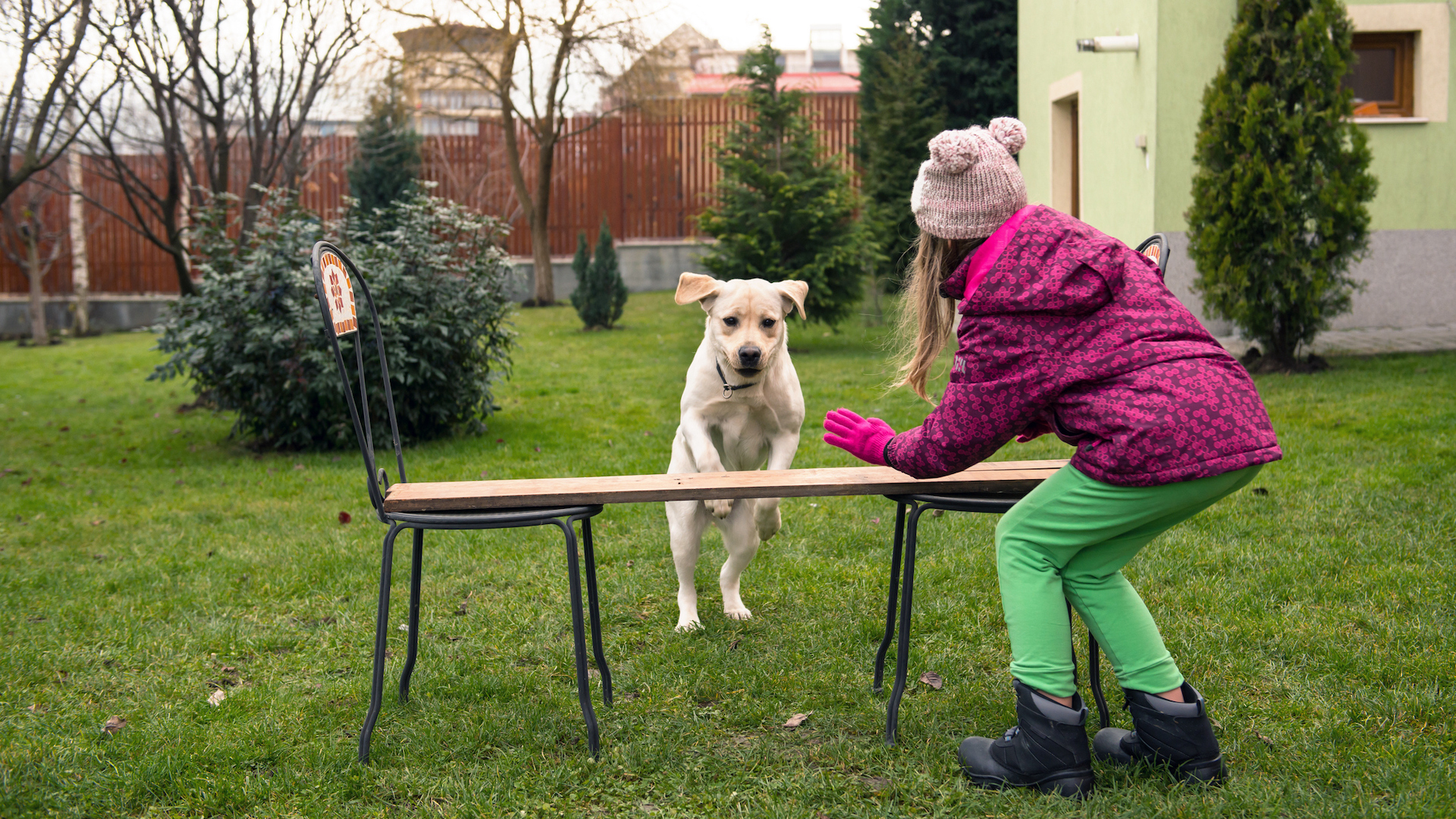
Who doesn’t love a home-made assault course! Moreover, it’s great for burning off energy, as well as mentally stimulating.
“Help your pet have fun, stretch their legs, and practice crawling, climbing, or jumping by setting up a short assault course and encouraging them to have a go,” says Dr Godfrey.
“Remember – if you’re not using treats to encourage them, you’ll have to give them lots of positive reinforcement by petting them and praising them.”
5. Learn some tricks

“Many pets love to use their brains and learn new tricks – it fights boredom and helps them bond with you,” says Dr Godfrey. “Start with simple commands, then see if you can build up to learn something more complicated, like retrieving certain toys or playing dead.”
Patience and practice are key.
6. Visit a new place

If you have a dog, they might get bored with their usual walking route, where they meet the same dogs and the same people – and so might we!
“Why not explore somewhere new together – perhaps the beach, a hike in the mountains, or a dog activity center?” suggests Dr Godfrey.
Luckily, there are plenty of fun places for dog walks in the US you can try out. And such adventures are not limited to canines.
“If you’ve got a cat, you can still give them a change of scenery by taking them out on a leash (in the garden if they’re an indoor cat, or somewhere quiet if not),” Hannah says. “You could even build a catio so that your indoor cat gets some time outside experiencing new things.”
7. Hide and seek
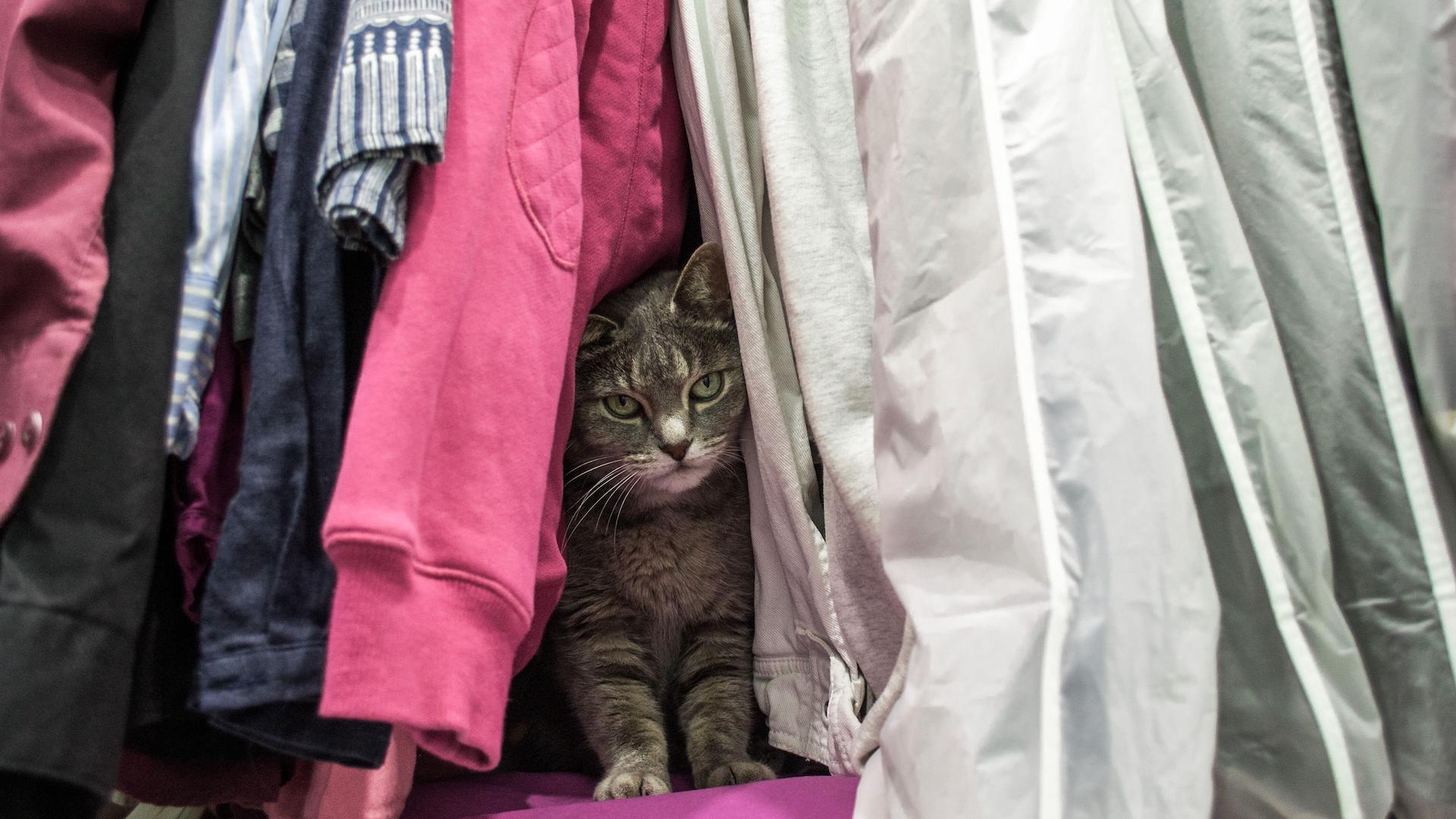
Many animals appear to enjoy playing hide and seek – some even making excited noises when they manage to discover the hiding human. If you watch dogs, and particularly cats, in nature, they often engage in hiding games, which is thought to link back to their natural hunting instincts. However, there’s no jeopardy on home turf, just a safe and fun way to stimulate their minds.
Dr Godfrey describes this as a “level up” from hiding toys.
“Some dogs love to play hide and seek with their owners, so why not find a great hiding place and wait for the excitement when they find you. If they’re struggling, you can whistle or call them to get their attention!”
8. Mirror play
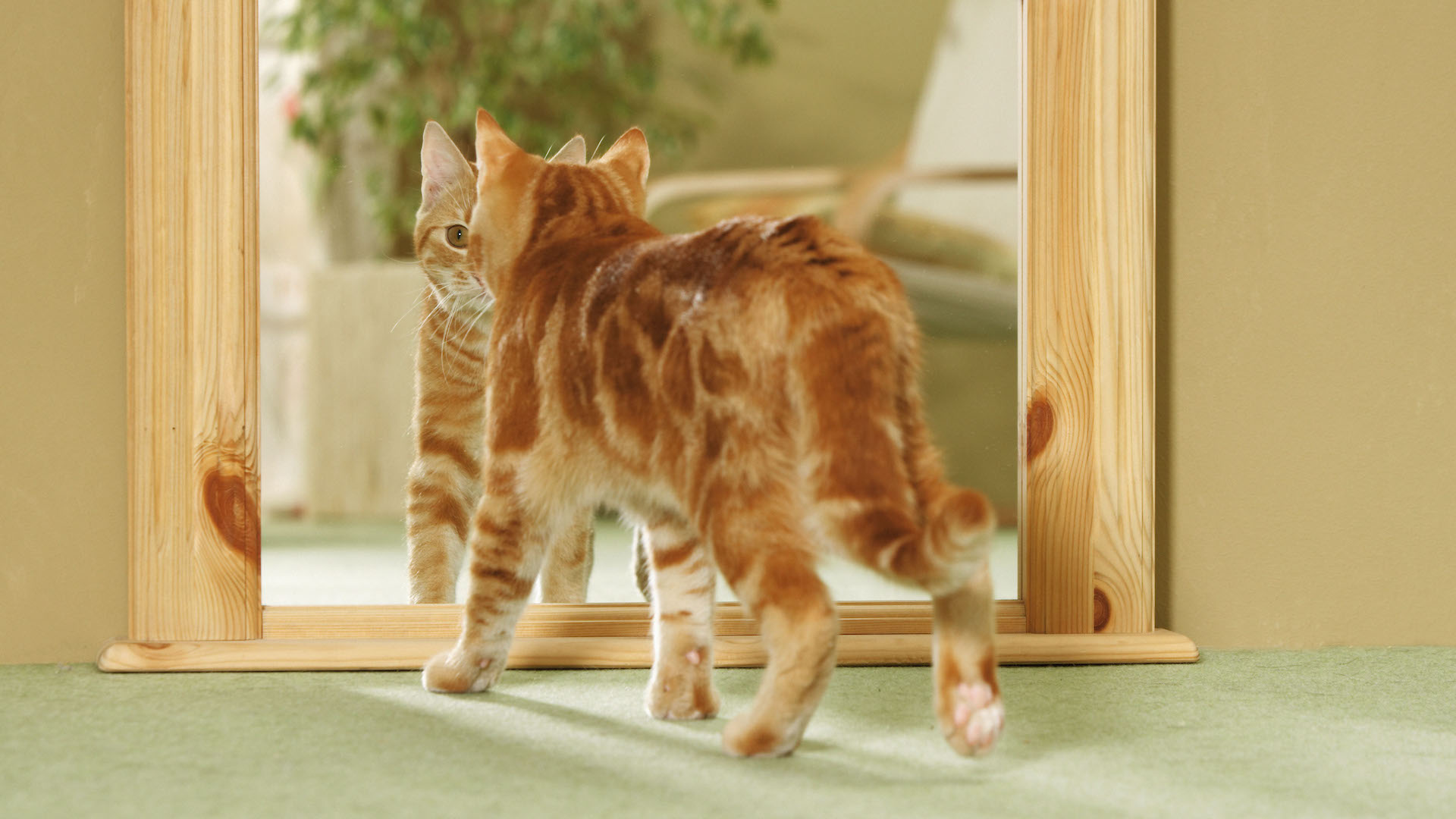
Most domestic pets do not recognize themselves in a mirror, however, many will engage in playful behavior on spotting the “other” cat or dog in the glass. They tend to react with curiosity, suggesting it’s a potential idea to stimulate them, but if they show signs of hostility or aggression, it’s clearly time to find a different game.
9. Name that toy
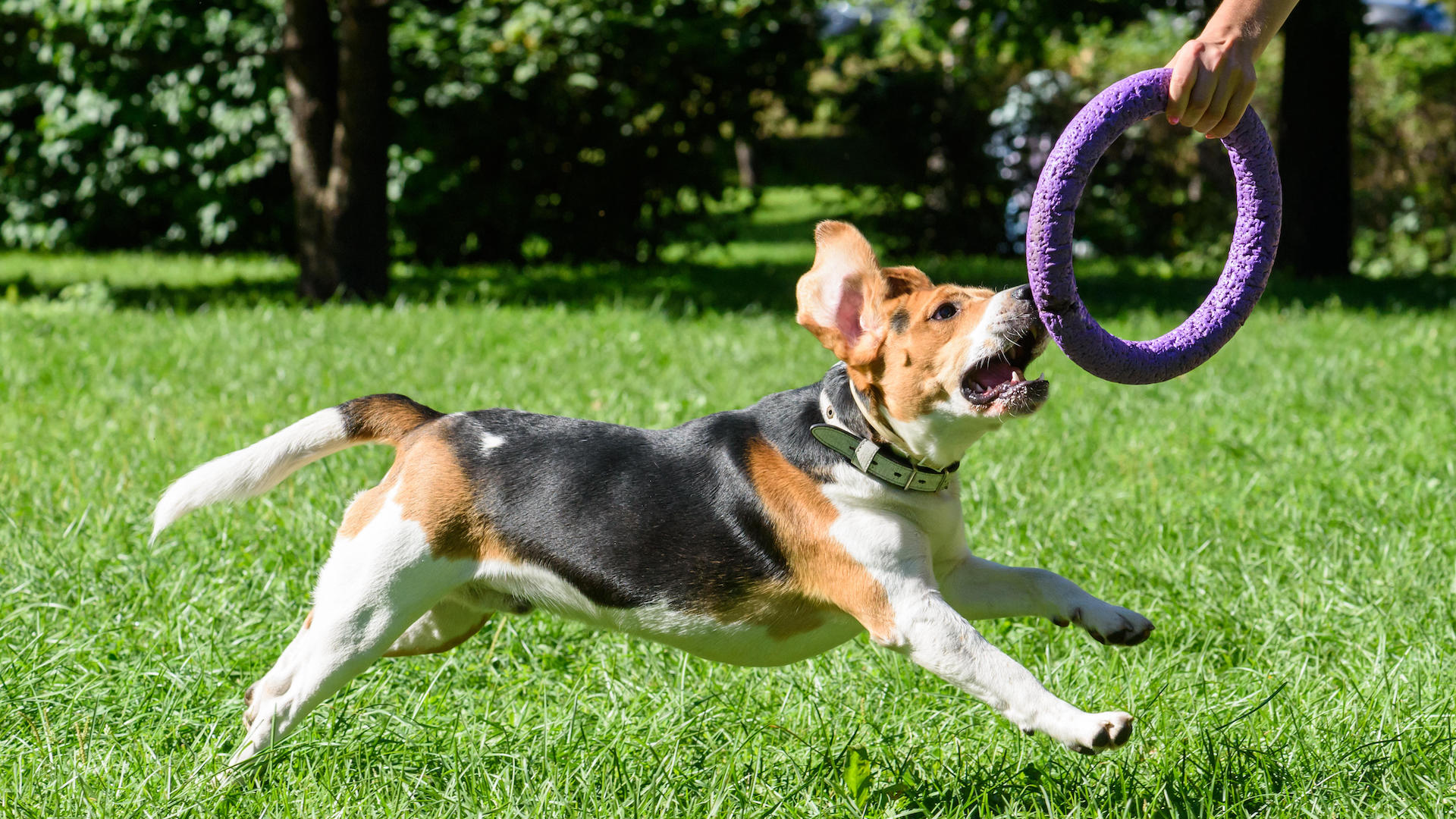
According to leading canine researcher Stanley Coren, the average dog can learn around 165 words – and the smartest dog breeds can learn up to 250. This means that you can, with patience and training, give names to certain toys and teach dogs to associate those words with them. Start with just one and see how you go!
Cats are also capable of associating words with experiences and simple commands, though there is less research available on their learning.
10. Window watching

Many animals seem to take pleasure in looking out of the window, as it provides them with mental stimulation. Cats are curious by nature and enjoy observing the world and listening to the noises. Dogs, too, typically find window watching an enriching experience, though you have to take care that they aren’t starting to become territorial. Look out for barking or any other aggressive tendencies.
And, of course, always ensure any window-watching vantage points are safe so that the animal cannot jump out.
11. Tug of war
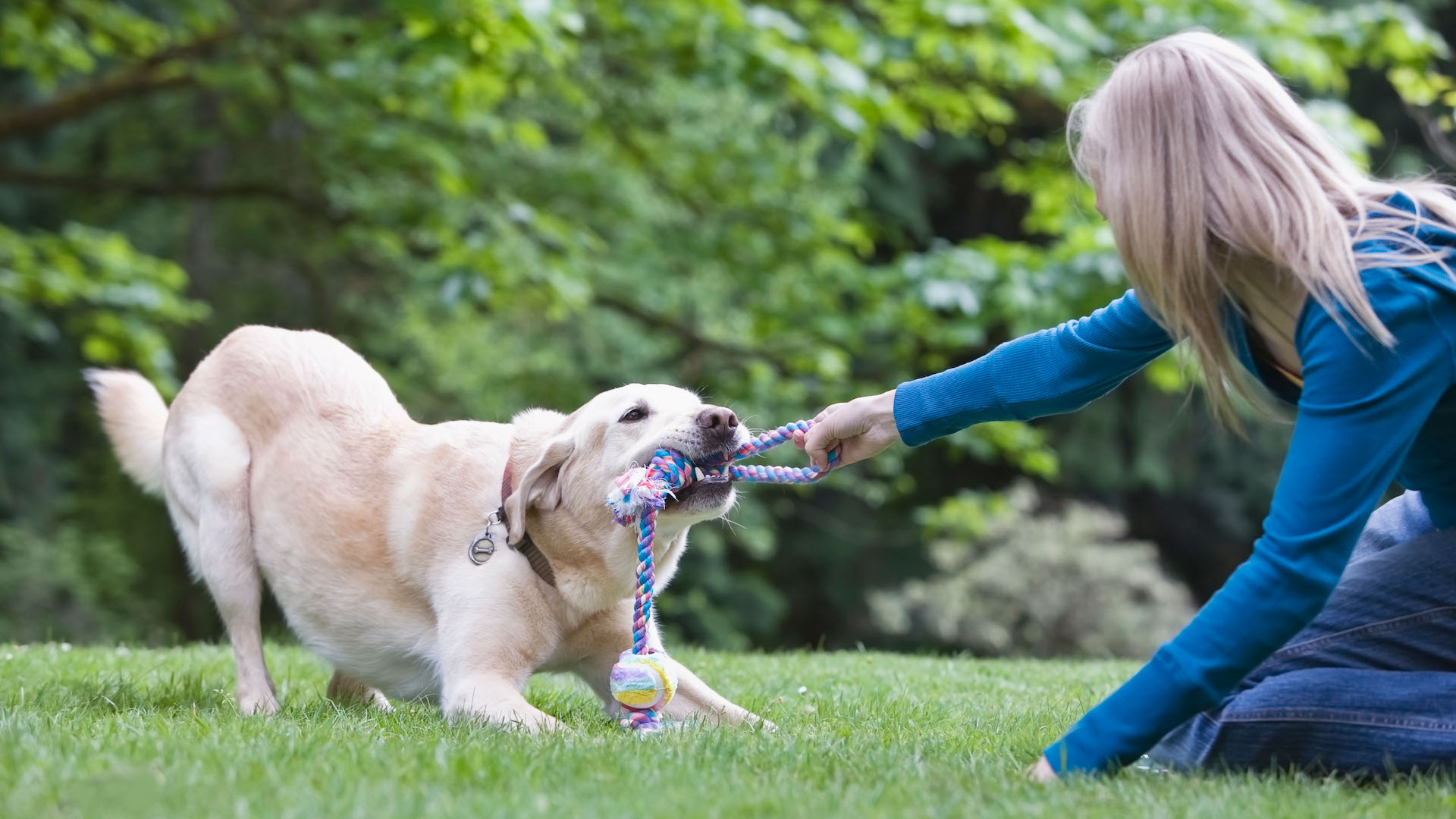
There is some debate over the value of playing tug of war with your dog. There isn’t any research that validates the argument that tug of war increases aggression. For most dogs, it serves as a fun game that can build confidence and deepen the bond between dog and handler.
If your dog is a resource guarder or gets very easily over-animated, tug of war is not the best option, however. Play it with a nice long rope and a low-value toy, in case the dog gets over-enthusiastic, and teach commands so that he understands when the game is over.
12. Agility training
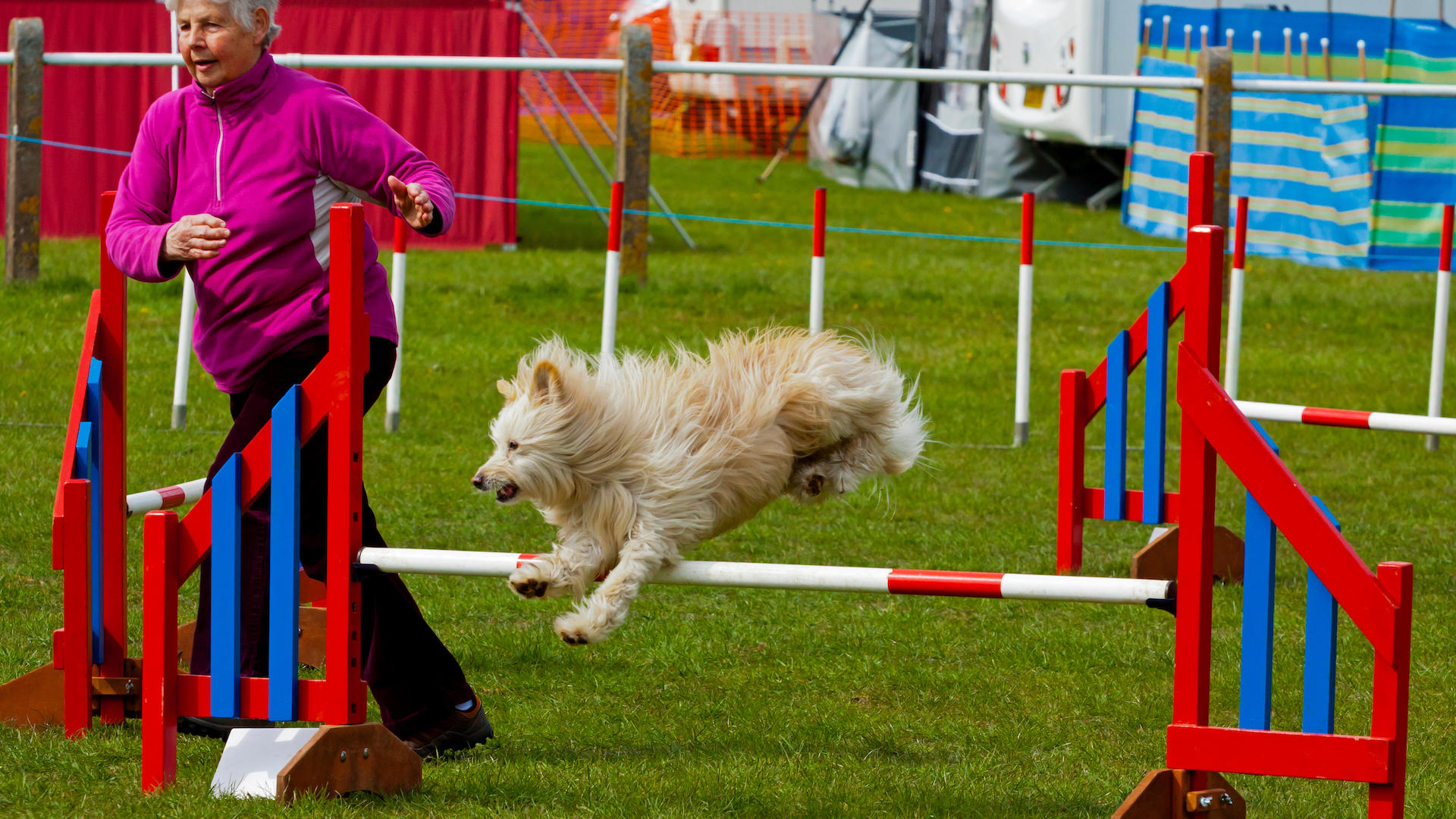
Agility training is more commonly associated with dogs, but cats can benefit, too. It taps into their natural agility, keeps them active, and provides physical and mental stimulation.
You don’t have to go to a professional set-up – you can create an agility area in your home using basic kit, such as cardboard boxes for tunnels, bamboo sticks for jumps, and so on.
13. Laser games

Chasing laser pointers is not without risk, but is loved by some. It makes the most of their natural hunting instincts and their love of pouncing on their “prey”.
This game is probably best left to the feline population, as dogs tend to find it frustrating when it triggers their prey drive, but they fail to catch their target. It can, however, lead them to become obsessed with lights and shadows.
14. Clicker training
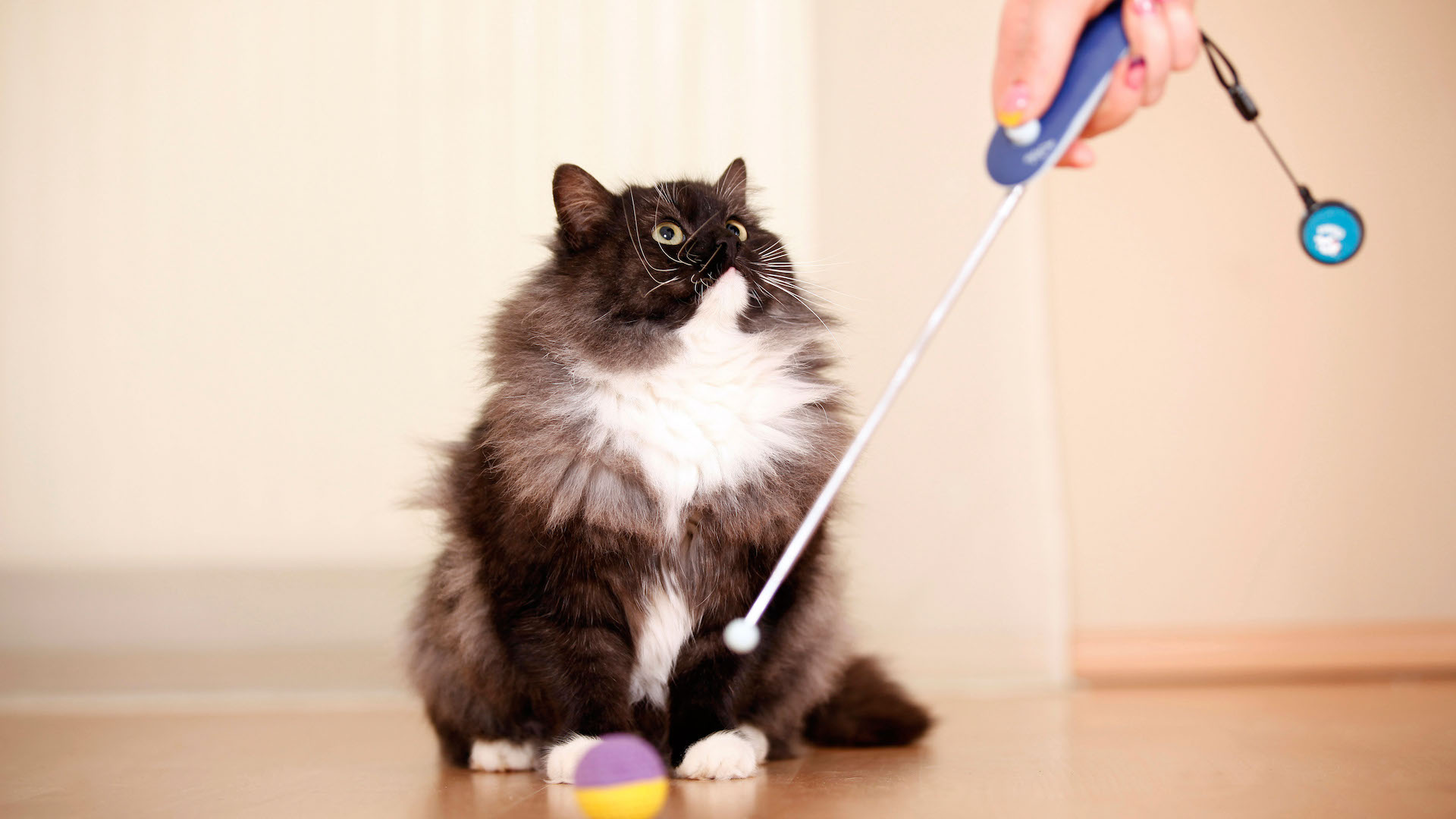
Nearly all pets benefit from clicker training, and it is a satisfying and useful way to stimulate them. It’s a positive reinforcement technique that is typically rewarded by an edible treat, but you can use other motivations, such as a scratch or a favorite toy. If your pet is already conditioned to understand the clicker, they are less likely to need food as a motivator.
15. Pet playdates

Playdates with other animals are a great opportunity for socialization, play, physical activity, and mental stimulation. Dogs, in particular, are pack animals, and therefore, companionship with other pooches can be beneficial for their overall well-being.
If your dog is not yet used to meeting other dogs, make sure you meet on neutral territory and start gradually, with one well-mannered, well-trained dog at a time. You can join community walks with other dog walkers and find that you both benefit from communion with like-minded humans and pups!
16. Swimming

Not all dogs are naturals in the water, in fact, there are some breeds that can’t swim. However, for those breeds that love swimming, it is a low-impact form of exercise that gives them great pleasure, burns off plenty of excess energy, and provides mental and physical stimulation. Invest in a life jacket if you have any concerns.
Felines are renowned for being hydrophobic, but in reality, there are many that actually enjoy a swim, and many cat breeds that like water. Even if they don’t want to embark on a spot of “cat-paddle”, they love playing with water, whether it’s from the faucet or dipping a paw in the pool.
17. Grooming
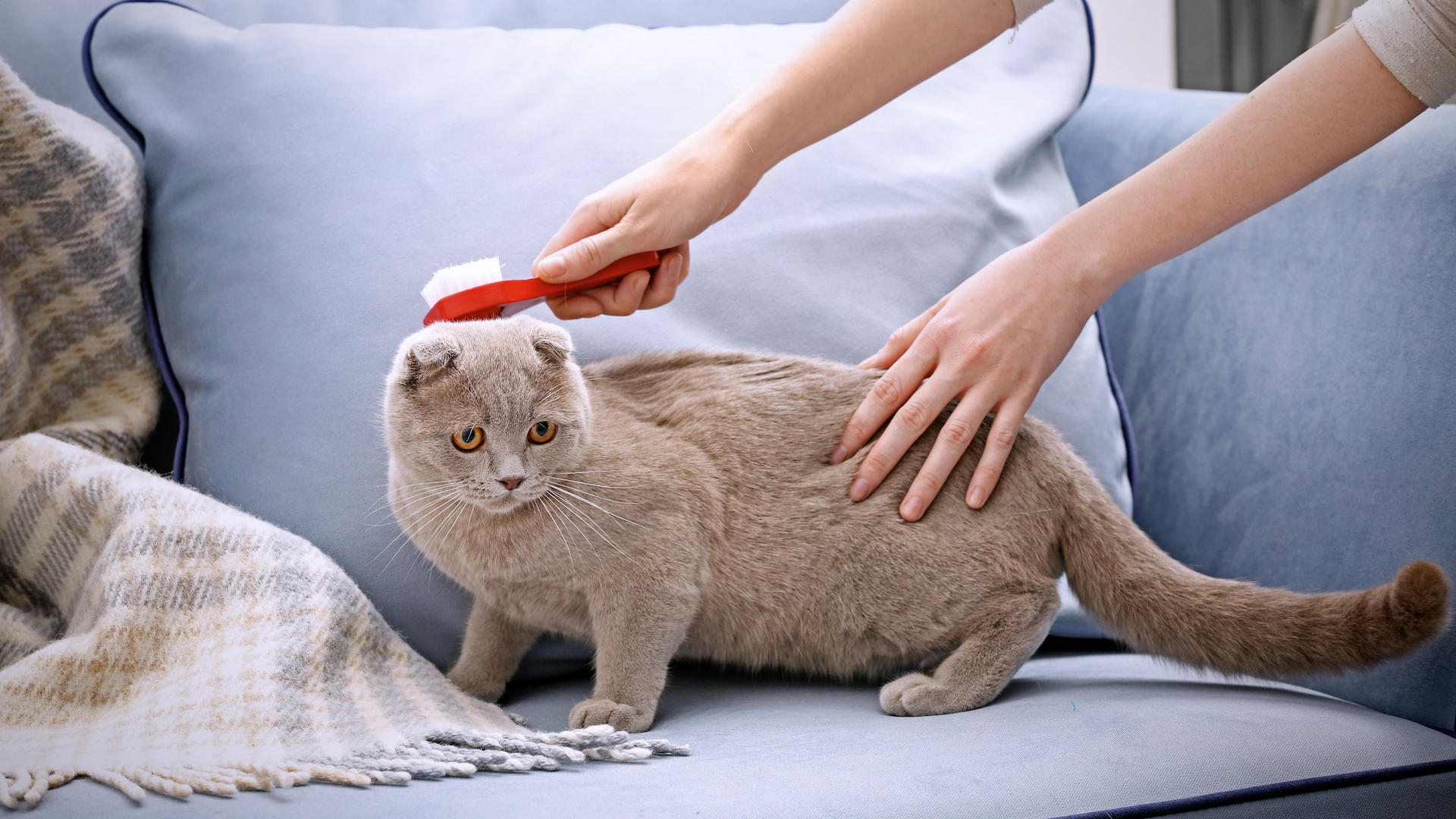
Grooming can be a positive experience for both dogs and cats, though it’s fair to say that some enjoy it more than others! It can help enhance the bond between you if introduced gently and gradually. Dogs in particular often find the brushing sensation pleasurable. Furthermore, it gives them that one-on-one time they relish.
18. Massage
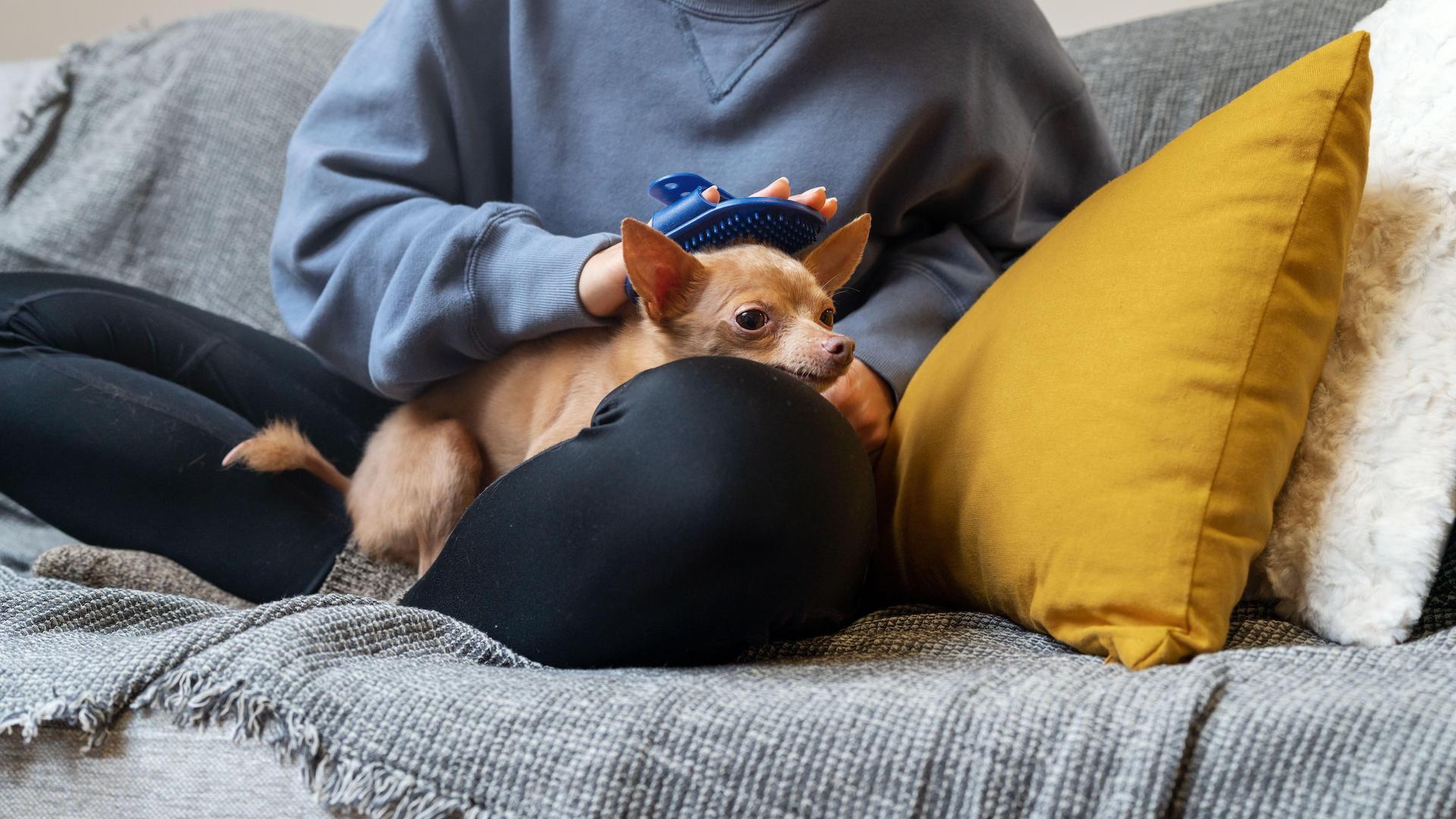
Learning to massage your pet can provide them with an enriching experience, deepen the bond between you, and help increase mobility and circulation. They’ll enjoy that you are spending time with them alone. Some prefer more of a gentle stroke, while others like a deeper scratch. Always watch your pet to see how it’s reacting – less is more!
For pets that suffer from conditions such as arthritis and anxiety, massage can be hugely beneficial in soothing both physical and mental stress. Why not treat your cat to a spa day?
19. Singing to them

The jury is out on how beneficial music and singing are to our pets. Research indicates that classical music can have a calming effect. Anecdotally, many pet owners insist that their cat or dog loves it when they sing to them, and it certainly seems to have a stimulating effect, whether it provokes curiosity or surprise. Some people even report that their pet will try to yodel back!
20. Beach trip

There are few dogs that do not treasure a trip to a pet-friendly beach. Vast expanses of sand, off-leash exercise, new scents, and waves rushing down the shoreline provide a wonderfully stimulating day out. Remember to take fresh drinking water, plenty of poop bags and a parasol to provide your pet with shade if it’s a sunny day.
Edited by Georgia Guerin and Alexis De Leaver.
Last updated in June 2025.
Martha is an experienced journalist working in both print and digital media. She specializes in the canine, equine and rural sphere where she has covered a wide range of topics from cloning animals and the ingredients for a perfect yard dog, to helping owners find the best canine GPS trackers on the market. When she’s not busy writing about dogs and horses, she’ll be found either aboard a horse or looking after the menagerie of pets in her care.
